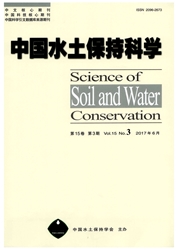

 中文摘要:
中文摘要:
以黄土高原多沙粗沙区为研究区。以植物自然分布为基础。利用DEM地形分析方法。对降雨、温度等因素的空间变化进行分析,并结合物种的生态环境需求,利用GIS空间分析功能,对该区38个物种适宜性的空间变化进行分析。并以此为基础,评价立地对植物生长型的适宜性。结果表明:利用DEM地形分析与GIS空间分析,可以很好地将物种适宜性的空间变化表现出来;利用VB编程,结合GIS,将物种适宜性与立地适宜性的空间变化予以图形显示。随着数据的积累和数据采集手段的改进,所采用的方法对于区域植被空间适宜性评价可提供积极的借鉴作用。
 英文摘要:
英文摘要:
Vegetation suitability mapping is valuable for the selection of species for implementing the Re-Vegetation Program in the Coarse Sandy Hilly Catchments of the Loess Plateau, China. A Boolean model was introduced, which used thin plate smoothing spline interpolation method to model the distribution of precipita- tion and temperature, and analyzed the suitability of 38 species using GIS techniques as well as considering the requirement of these species for environmental conditions. Then we overlaid the single suitability map of 38 species, and got the frequency map of species for a specified site. Here high frequency means the higher suitspecies, and got the frequency map of species for a specified site. Here high frequency means the higher suit- ability of a site for re-vegetation. The result showed that with combination of topographic analysis based on DEM and GIS functions the spatial changes of vegetation suitability can be modeled. These spatial changes on the screen using Visual Basic language and GIS functions was also demonstrated, thus helping decision makers to have an intuitionistic view of species and site suitability changes over large area. Although some more powerful models such as GLM and GAM were not employed due to the data limit, yet the method here still can provide some insightful implication for similar studies in this area.
 同期刊论文项目
同期刊论文项目
 同项目期刊论文
同项目期刊论文
 期刊信息
期刊信息
